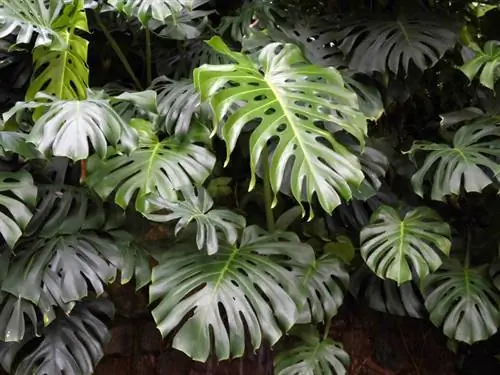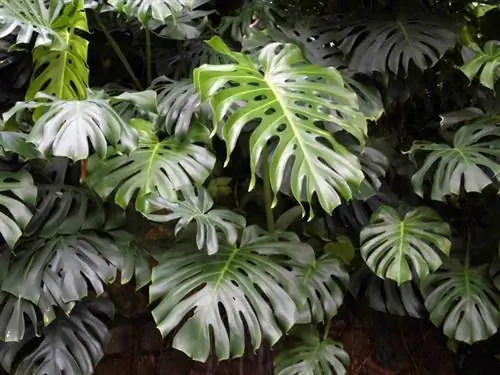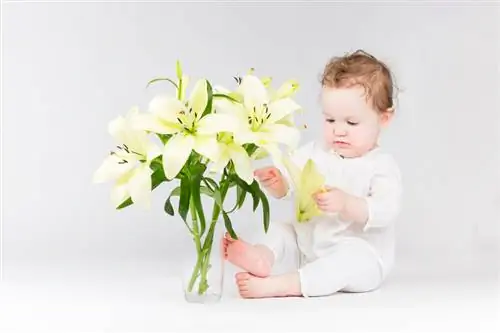- Author admin [email protected].
- Public 2023-12-16 16:46.
- Last modified 2025-01-23 11:20.
The ornamental splendor and exotic origins of Monstera species raise doubts about their safety. In particular, the classification of the powerful ornamental foliage plants as part of the arum family indicates toxic ingredients. Read here to what extent a window leaf is poisonous to humans and animals.

Is the Monstera plant poisonous to humans and animals?
Is Monstera poisonous? Monstera species contain toxic ingredients such as calcium oxalate crystals, oxalic acid s alts and resorcinol, which can cause poisoning in humans and animals if consumed. However, the fruits of Monstera deliciosa are edible, but their oxalic acid content is a he alth concern for some groups of people.
Furious climbing plant with poisonous ingredients
The poisoning experts at the University Hospital of Bonn warn against consuming flowers, leaves and roots of all Monstera species. It has been proven that the plant parts contain the following toxic components:
- Calcium oxalate crystals
- Oxalic acid s alts
- Resorcinol
- Unidentified live substances
If these substances are consumed in large quantities, they cause symptoms of poisoning in people and animals. It is therefore advisable to place a window leaf out of the reach of small children and pets. Since the plant sap (€9.00 on Amazon) can cause irritation and allergic reactions when it comes into contact with the skin, please wear gloves when carrying out any care work.
Pineapple banana as an exception to the poisonous rule
The warnings about the toxic content of Monstera end when it comes to the fruits of Monstera deliciosa. The delicious window leaf gets its name because it gifts us with edible fruits. These are also often referred to as pineapple bananas due to their elongated shape, especially since the taste of the pulp is reminiscent of pineapple.
In this context, it should not be overlooked that the high content of oxalic acid is a he alth concern for small children, seniors and people with kidney disease. Comparable to enjoying rhubarb in late summer.
Tip
If you notice additional round and oval openings in the pinnate Monstera leaves, these are not symptoms of disease or pest infestation. Rather, the window leaf uses this strategy so that a strong tropical storm cannot harm the plant and enough light can penetrate the dense foliage.






